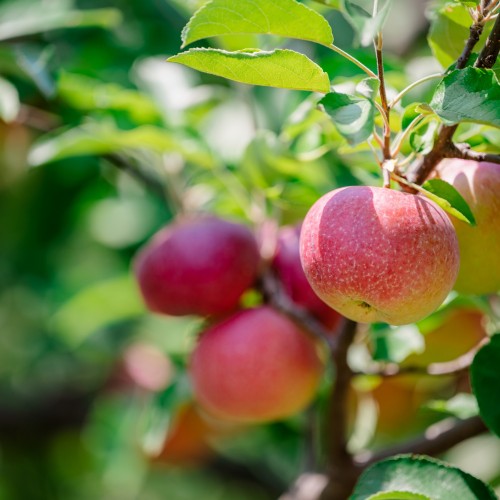Overview of Fruits at Monticello
Jefferson's fruit gardens provided "precious refreshment" and served as part of his garden laboratory where he grew over 150 varieties of 31 of the finest temperate species of fruit.

Monticello is closed today, Friday, December 5, due to poor winter weather conditions.
Monticello's eight-acre fruit garden, or "Fruitery" as Jefferson called it, included the 400-tree South Orchard; two small vineyards (Northeast and Southwest); "berry squares" of currants, gooseberries, and raspberries; a nursery where Jefferson propagated fruit trees and special garden plants, and "submural beds" where figs and strawberries were grown to take advantage of the warming microclimate created by the stone wall.

Jefferson's fruit gardens provided "precious refreshment" and served as part of his garden laboratory where he grew over 150 varieties of 31 of the finest temperate species of fruit.

Monticello's fruit gardens consisted of two orchards, two small neighboring vineyards, berry "squares," and several other plantings around the mountaintop.

The South Orchard, just below the Vegetable Garden, featured the most diverse selection of fruits at Monticello.

Jefferson strived to add grape culture to Monticello and planted several varieties of both European and American species.

Monticello's Nurseries were a sanctuary for Jefferson's favorite trees and shrubs and a proving ground for new plants.
ADDRESS:
1050 Monticello Loop
Charlottesville, VA 22902
GENERAL INFORMATION:
(434) 984-9800
